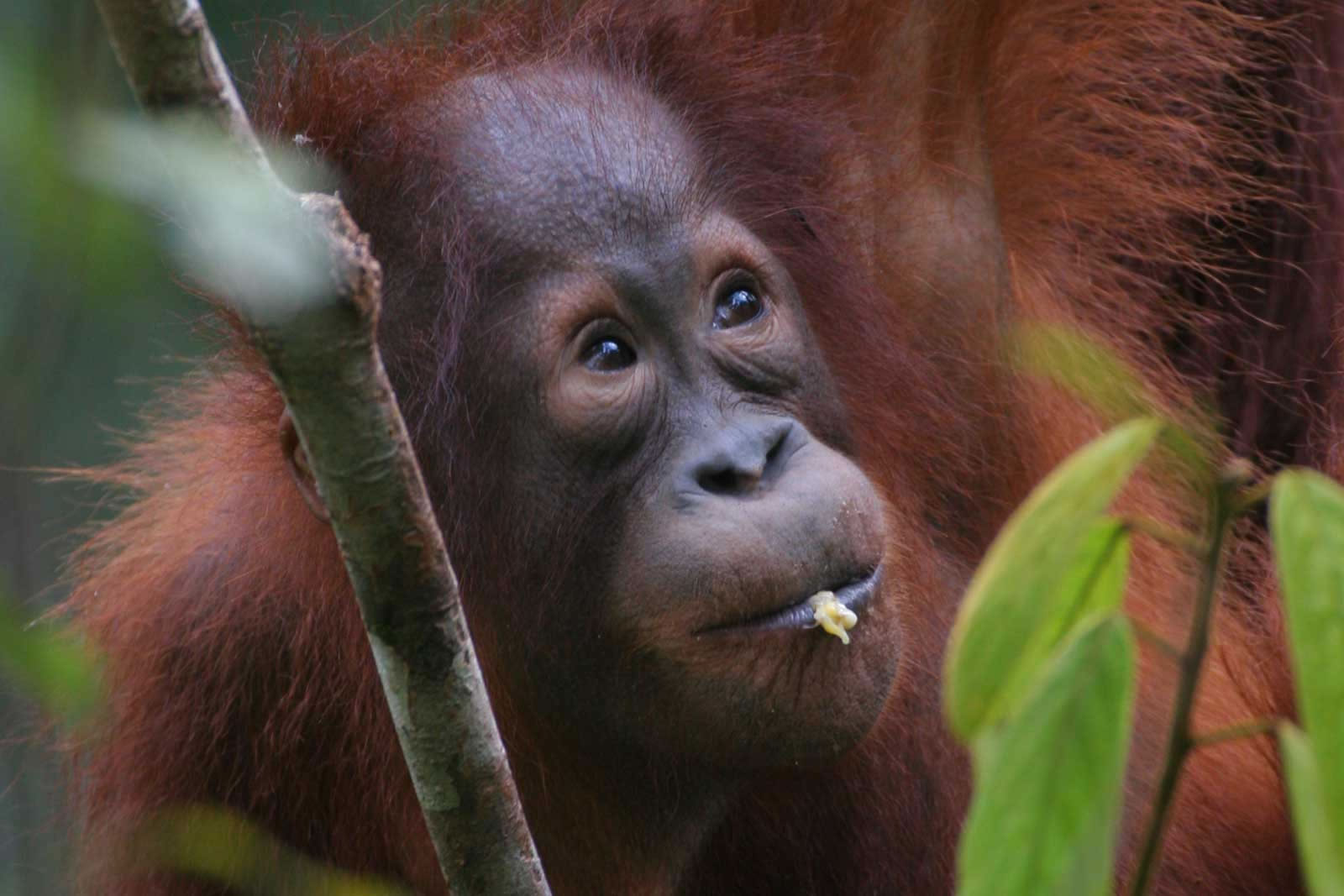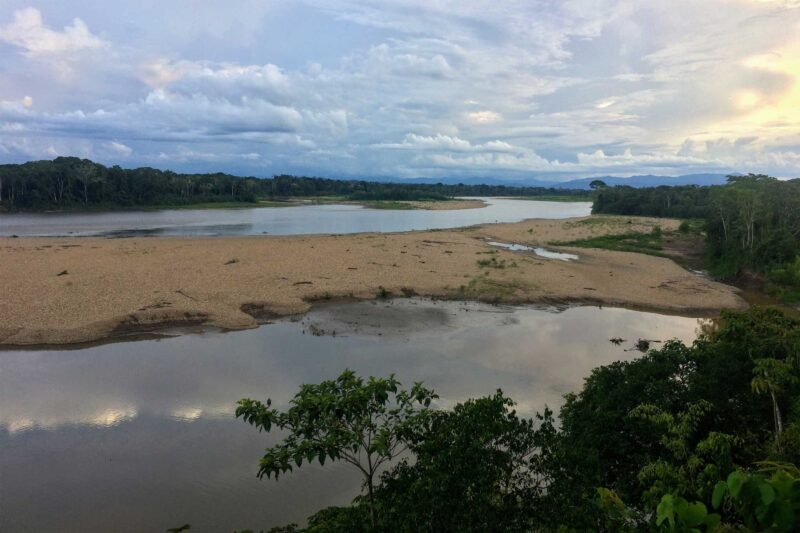On the Indonesian island of Sumatra I met a man who stole songbirds from the trees so they could be stuck in cages. I’m with Maya Angelou when it comes to birds in cages: The caged bird sings/ with a fearful trill/ of things unknown/ but longed for still. So I’m happy to disclose that the bird stealer – his name is Hariyono – has come full circle and is now a wildlife guide at Way Kambas National Park.
The 500 square miles of protected rainforest are a safe haven for more than 300 bird species and many critically endangered mammals, including that precious raging beauty, the Sumatran tiger. Yet Way Kambas barely registers on tourist itineraries.
Across the vast archipelago of Indonesia – one of the most biodiverse places on the planet – just two, admittedly charismatic, creatures monopolise the imaginations of visitors: the orang-utan and the Komodo dragon.
I have seen neither but on my first visit to Indonesia I decided to take the road less travelled. As the country becomes more accessible to British travellers – the national airline, Garuda, is launching a five-times-a-week service between London Gatwick and Jakarta via Schiphol on Monday – it struck me as a good time to seek out some hitherto neglected but no less compelling wildlife.
Part of the Indonesian archipelago is a biological transition zone between the plants and animals of Asia and those of Australia. To explore this first-hand you would do well to travel to North Sulawesi, the upper half of a vast island lying east of Borneo and north-east of Java.
Sulawesi has a high incidence of species endemism – animals that are found nowhere else on earth – and that endemism is at its richest in the far north, which I reached on a three-hour flight from Jakarta.
My base for three nights was a simple beach resort called Pulisan and my arrival there, after an hour’s drive from the airport at Manado, had a symbolic as well as a faintly ignominious air to it – I followed on the flip-flopped heels of a woman half my age who carried my suitcase on her head (and a bag of vegetables in one hand). She had met me at the nearest road head, 15 minutes away through the rainforest, and our journey to the beach was sufficiently strange to feel like a transition.
The jungle path led to a string of stilted wooden cabins with verandas and thatched roofs, facing a bay where the Celebes and Molucca seas meet. Pulisan’s German owner, an anthropologist called Katrin Weise, described it to me as a “pirate’s nest” – by which she meant (or I think she meant) that it blends into the cliffs and rainforest that overhang it, and you can strike out from it on some thrillingly rewarding raids.
The booty here is the natural plenitude, both above and below water. Most of the guests at Pulisan come for the diving and snorkelling. The world-class dive site of Bunaken Island is just around the tip of the Minahasa Peninsula but the dive centre at Pulisan has its own, unspoilt areas of blooming corals and marine mammals, especially around Bangka Island.
Dolphins plaited themselves ahead of the bows of the dive boat that took me out there, and millions of tiny fish formed rippling horse’s manes in our wake. While a Dutch couple staying at Pulisan went scuba diving, I snorkelled over a psychedelic world of clownfish and cloud banks of waving coral.
For an hour or so we floated within a membrane of serenity; then the dive boat skipper showed us the rip in that membrane that could tear Bangka apart. The rip is orange-coloured – the colour of the bare earth gouged out of the rainforest on one side of the island.
A Chinese mining company has started preliminary work on an iron ore mine there, in contravention of Bangka’s protected status as a zone of tourism and in the teeth of legal challenges from islanders and environmental groups. “They want to build a jetty and there will be an industrial harbour,” Weise told me. “The consequences will be devastating for the marine life – dugongs, dolphins, whale sharks, and the most abundant coral reefs you can imagine.”
The corollary of unblemished natural beauty is the propensity of human beings to spoil it. Many land mammals and birds are also under threat from poaching and habitat loss including the crested black macaque, the spectral tarsier (a lemur-like primate with African ancestry) and the bear cuscus (a koala-like marsupial whose rellies are from Oz).
Only in this biological transition zone would such creatures share tree space. I managed to spot both, as well as several troupes of black macaques, when the dive boat dropped me across the bay from Pulisan to Tangkoko-Batuangus Nature Reserve, 36 square miles of tropical forest on the north-eastern tip of the Minahasa Peninsula.
Ninety feet up in the canopy, bear cuscus were lolling about on thin branches as insouciantly as Huck Finn on a Mississippi log, while a huddle of tiny, saucer-eyed, button-cute tarsiers were caught napping within the Vorticist superstructure of a strangler fig. My guide – a villager who did not even have binoculars, so poorly resourced are Indonesia’s parks and reserves – gave personal and repeated thanks to each of these species for revealing themselves to the stranger.
Fifteen hundred miles and a time zone south-west across the Java Sea, Way Kambas National Park on the island of Sumatra has its own cast list of stellar rarities. These include the white-winged wood duck and endangered endemics such as the Sumatran elephant and rhino. But the one I really dreamed of seeing was the Sumatran tiger.
Found only on Sumatra, there are estimated to be only 400 left in the wild, of which 30-40 live within the boundaries of Way Kambas. Unicorns at Stonehenge are scarcely less common but I travelled in hope.
Hariyono told me about his days as a former bird smuggler as he led the way. “After school I didn’t have a job and needed the money, but it was not long, my activity with the bird smugglers,” he told me. “Now I still sell the birds – but in pictures!” He means he spots beautiful birds for tourists to point their big lenses at.
We entered the core tiger habitat by river, taking a small wooden boat downstream for half a mile then hopping off into dense jungle. For 90 minutes we followed paths periodically churned by wild pigs and infested with leeches.
It wasn’t easy walking – the leeches were unstoppable – but it was exciting. Sunlight filtered through small, closely growing trees on to orange-brown leaf litter produced a vertical dappling effect, just like the flank of a tiger, and we came across plenty of tiger scat and scratchings on the lower trunks of trees. The freshest scratchings were “from last night”, said Hari, inviting me to dip my nose to a spray of leaves spotted with pungent tiger urine.
The knowledge that a tiger of this rarity was so close – less than half a day away – was thrilling enough for me and I spent the rest of my time at Way Kambas succumbing to the spell of birds. Hari knew where to find them because, once, he had camped out here as part of a team of filchers and smugglers.
The liquescent warbles of caged songbirds bring a pocket of rainforest and a reminder of rural childhood to the cramped apartments of many millions of Indonesia’s city dwellers. One of the most sought-after birds is the white-rumped shama – “A beautiful singing bird with a long tail,” said Hari – but there are many others of exquisite voice and livery.
Hardly less striking are their common names, which really do have a stab at matching the beauty of their subjects. On walks through the rainforest, with the canopy echoing to the whoops of agile gibbons, and a dreamy river trip on water like medieval glass, I ticked off a long list – writing “Wow!” by the real stunners: scarlet-rumped trogon and red-naped trogon, Asian paradise flycatcher, blue-throated bee-eater, blue-eared kingfisher… wow wow wow.
It’s heartbreaking to think of them stolen away from the rainforests of Sumatra, where they flash like miniature fireballs across caverns of shadow. But the redemptive story of people like Hari is grounds for optimism, reckons Dr Alan Wilson, a conservationist who is also the founder and chairman of EcoLodges Indonesia.
I met Wilson, a veterinarian who grew up in Uganda, at the lodge he owns by the entrance to Way Kambas, which I used as my base for three days. He admits that Indonesia is “about 80 years behind Africa in its national park management” – my birdwatching boat ride, for example, was in a smelly old boat plagued by engine failure – but is cheered by evidence of a growing environmental commitment among young people such as Hariyono.
“Our main aim is to protect Indonesia’s national parks through job creation using local people,” he said. “It’s the common people who will change this flaming business of destroying the world.” And then perhaps it will no longer be dangerous for a bird to sing like an angel.
Jakarta essentials
When to go
May to September/October is the dry season for the places mentioned here.
Flying time and time difference
Gatwick-Amsterdam 1 ¼ hours, Amsterdam-Jakarta just under 14hrs; GMT +7hrs in Java and Sumatra; + 8hrs in Sulawesi.
Getting there
From today, Garuda Indonesia (01293 874963; garudaindonesia.co.uk) flies five times a week From Gatwick, via Amsterdam (non-stop Amsterdam-Jakarta): return from about £670.
Reef and Rainforest Tours (01803 866965; reefandrainforest.co.uk) offers a 16-day tailor-made tour combining Tangkoko on North Sulawesi and Way Kambas on Sumatra with the orang-utans of Borneo and the dragons of Komodo and other natural attractions: from £2,429 per person, sharing, including all accommodation, domestic flights, activities and most meals; international flights extra.


















